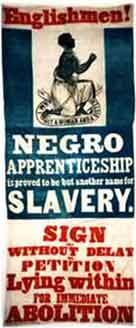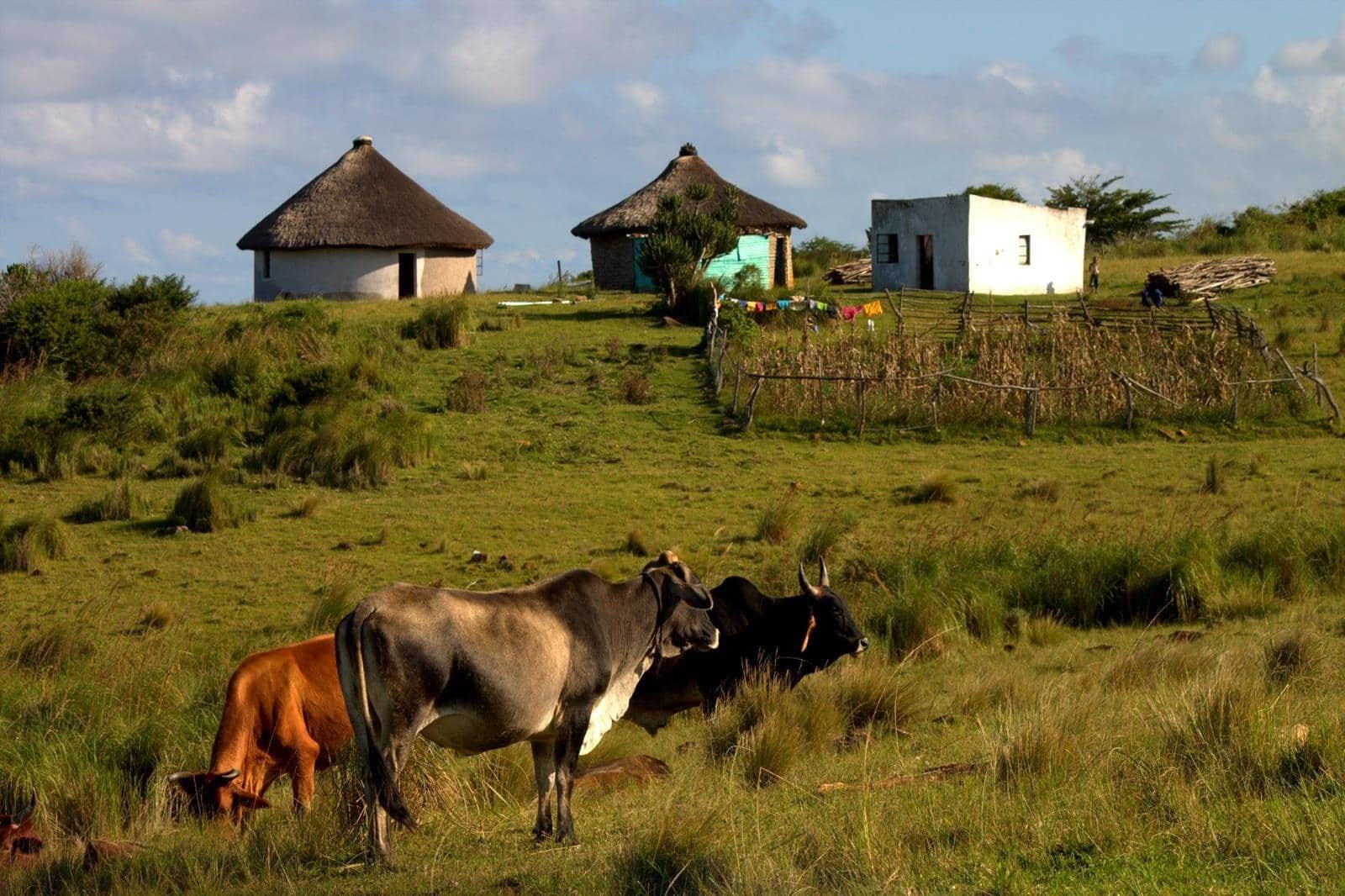Why Nations Fail Illustrated
Lecture 8
Origins of Extractive Institutions in
Southeast Asia & sub-Saharan Africa
November 27, 2018
Masayuki Kudamatsu
Chapter 9 and page 299

Today's Road Map
Dutch colonization of Southeast Asia
Slave trade in Africa
British colonization of South Africa

Today's Road Map
Dutch colonization of Southeast Asia
Slave trade in Africa
British colonization of South Africa
Southeast Asia in 14th-16th centuries
Prosperity with spice trade
All merchants across Southeast Asia come to Melaka
for selling spices to
from whom
Europeans buy spices
(e.g. Venice)

Image Source: Reid (2018)
Indians
Chinese
Arabs
Southeast Asia in 14th-16th centuries
City-states emerge, with absolutist kings
Ache
Banten
Brunei
Makassar
Melaka
Pegu
Kings engage in
spice trade
or grant monopolies
to spice traders

Image Source: Reid (2018)
Southeast Asia in 14th-16th centuries (cont.)
Example: Moluccas
Grown only in these islands:
Image Sources: Tripper.com / Wikimedia Commons

Cloves


Mace/Nutmeg
Southeast Asia in 14th-16th centuries (cont.)
Political & Economic Institutions in Moluccas
Ambon (produces cloves)
Centralized state
Citizens
owed tribute to king
subject to forced labor

Southeast Asia in 14th-16th centuries (cont.)
Political & Economic Institutions in Moluccas
Banda Islands
(produce nutmeg/mace)
Lack of political centralization
Each small town run by village meetings of citizens
cf. Somalia (Lecture 4)

Dutch colonization in 17th century
Force King of Ambon
to grant monopoly in cloves trade to Dutch
Militarily eliminate Portuguese & other traders
Force Kings of northern Moluccas
to abandon the production & trade of cloves in their territories
Dutch established their monopoly of cloves trade
| economic institutions | ||
|---|---|---|
| Secure for everyone |
Property rights | Insecure for majority of people |
| Free | Occupational choice |
Forced labor |
| Free | Entry of new businesses | Prevented by monopolies |
| Unbiased | System of laws | Biased for the powerful/rich |
| Promoted | Public service provision | Discouraged |
Economic Institutions
Inclusive
Extractive
Property rights
Secure for everyone
Insecure for
majority of people
Occupational choice
Free
Forced labor
Entry of
new businesses
Free
Prevented by
monopolies
System of laws
Unbiased
Biased for
the powerful / rich
Public service provision
Provided
Limited
That is...
Dutch colonization in 17th century (cont.)
Took over & intensified the "feudal system" of Ambon
Each household in Ambon:
Tied to land
Required to cultivate a certain number of clove trees
Obliged to deliver forced labor to Dutch
| economic institutions | ||
|---|---|---|
| Secure for everyone |
Property rights | Insecure for majority of people |
| Free | Occupational choice |
Forced labor |
| Free | Entry of new businesses | Prevented by monopolies |
| Unbiased | System of laws | Biased for the powerful/rich |
| Promoted | Public service provision | Discouraged |
Economic Institutions
Inclusive
Extractive
Property rights
Secure for everyone
Insecure for
majority of people
Occupational choice
Free
Forced labor
Entry of
new businesses
Free
Prevented by
monopolies
System of laws
Unbiased
Biased for
the powerful / rich
Public service provision
Provided
Limited
That is...
Dutch colonization in 17th century (cont.)
These strategies didn't work in Banda Islands
No political authority to grant monopoly to Dutch & enforce it
No system of tribute to take over for capturing entire supply of spice

Jan Pieterszoon Coen (Governor of Batavia)
came up with a solution in 1621:
Massacre almost entire population of 15,000
Image Source: Wikimedia Commons
Dutch colonization in 17th century (cont.)
A plantation society was then created in Banda Islands
68 Dutchmen
Learn how to grow nutmeg from a few surviving locals
Buy slaves for producing spices
Receive lands
Sell spices to Dutch merchants
| economic institutions | ||
|---|---|---|
| Secure for everyone |
Property rights | Insecure for majority of people |
| Free | Occupational choice |
Forced labor |
| Free | Entry of new businesses | Prevented by monopolies |
| Unbiased | System of laws | Biased for the powerful/rich |
| Promoted | Public service provision | Discouraged |
Economic Institutions
Inclusive
Extractive
Property rights
Secure for everyone
Insecure for
majority of people
Occupational choice
Free
Slavery
Entry of
new businesses
Free
Prevented by
monopolies
System of laws
Unbiased
Biased for
the powerful / rich
Public service provision
Provided
Limited
That is...
Consequences of Dutch colonization
Reduction in spice production
World supply of cloves/nutmeg
by 60%
Price of nutmeg
by 100%
Several states abandon producing crops for export
Banten cut down
pepper trees in 1620
Maguindanao ruler bans
pepper/nutmeg production by late 17c


Extractive Economic Institutions
Economic Stagnation
Extractive Political Institutions
Extractive institutions lead to backwardness

Today's Road Map
Dutch colonization of Southeast Asia
Slave trade in Africa
British colonization of South Africa
Africa before 1500
Vibrant slave trade in East

Image Source: Wikimedia Commons
Many slaves:
transported through Saharan desert to Arabian Peninsula
Heavy use of slaves
for govt, army, farming
Muslim North Africa
Followed by
Mali
Ghana
Songhai
Europeans expanded African slave trade
Sugar plantation in Caribbeans
since early 17c

Image Source:
Demand for
African slaves
Europeans expanded African slave trade (cont.)
16c
Trans-Saharan
# of slaves exported
Trans-Atlantic
300,000
1,350,000
6,000,000
550,000
550,000
700,000
17c
18c
Europeans expanded African slave trade (cont.)
Total # of slaves exported during 1400-1900
Exceeds population in 1400
for Ghana, Togo, Benin, Angola

Source: Map 15 of Why Nations Fail
Impacts of trans-Atlantic slave trade
Europeans
demand slaves
& sell weapons
Africans
wage wars
& sell war captives
180,000 per year to West Africa by 1730
283,000-394,000 per year from Britain in late 18c
# of guns imported
Amount of gunpowder imported
384,000 kg per year from Britain for 1750-1807
Institutional changes in Africa
Slavery becomes the penalty for any crime

Image Source: globalsecurity.org
Impacts of trans-Atlantic slave trade (cont.)
Impacts of trans-Atlantic slave trade (cont.)
Population decline
22,000,000 - 25,000,000
46,000,000 - 53,000,000 w/o slave trade (estimated)
West & West-Central Africa in early 18c
8,000,000 slaves exported for 1700-1850
More must have died during warfare to capture slaves
End of Slave Trade
1807
British Parliament passed a bill to make slave trade illegal
1808
U.S. followed suit
1834
Slavery itself abolished
As a result of anti-slavery campaign

British navy actively enforced the ban in the Atlantic
Thanks to petitioning (Lecture 3)
Slaves simply redeployed to plantations for "legitimate crops"
Impact of the British ban on slave trade
Asante (in Ghana)
Settle slaves on plantations across Empire for:
Producing gold, kola nuts for export
Producing foods
Forcing them to work as porters
Dahomey (in Benin)
Palm oil plantations based on slave labor
near Whydah & Porto Novo

Image Source: Wikimedia Commons
% of population enslaved in 19th century
Over 50%
in Asante, Dahomey, Yoruba city-states (in Nigeria)
30% in western Sudan (Senegal, Mali, Burkina Faso, Niger, Chad)

Image Source: Wikimedia Commons
| economic institutions | ||
|---|---|---|
| Secure for everyone |
Property rights | Insecure for majority of people |
| Free | Occupational choice |
Forced labor |
| Free | Entry of new businesses | Prevented by monopolies |
| Unbiased | System of laws | Biased for the powerful/rich |
| Promoted | Public service provision | Discouraged |
Economic Institutions
Inclusive
Extractive
Property rights
Secure for everyone
Insecure for
majority of people
Occupational choice
Free
Slavery
Entry of
new businesses
Free
Prevented by
monopolies
System of laws
Unbiased
Biased for
the powerful / rich
Public service provision
Provided
Limited
That is...
Slavery continued well into 20th century
Sierra Leone
Its capital city (Freetown) built for freed American slaves in late 18c
But slavery was abolished only in 1928
Liberia
founded for freed American slaves in 1840s
1/4 of workers: forced labor till 1960s


Today's Road Map
Dutch colonization of Southeast Asia
Slave trade in Africa
British colonization of South Africa
South Africa until 18th century
West:
sparsely populated with
Khoikhoi people
(hunter-gatherers)
East:
densely populated with
Xhosa people
(farmers)
Escaped from the slave trade

Image Source: Mrudang Thakor (2013) "History of South Africa"
Communal ownership
Chiefs allocate land
19th-century South Africa
Temperate climate
free of tropical diseases
Discovery of
diamonds (1867) & gold (1886)
Demand for food & other agricultural products
Xhosa peoples adopt plows, wagons, irrigation
to increase production
# of Europeans settlers
+
Traditional chiefs resist to the change
Oppose to division of land into private properties
Try to ban new crops, plows, irrigation, fences
Institutional changes in Xhosa society
Emergence of private property rights to land
People buy lands to cultivate and sell crops
38,000 acres in 1879
90,000 acres in 1882 (by 8,000 farmers)
Umzimkulu of Griqualand East in Transkei
Total areas of land purchased in
But they fail
England:
(relatively) Strong
Parliament
Spain:
(relatively) Weak
Parliament
Rise of Atlantic Trade
Merchant class emerged
Glorious Revolution of 1688
Crown monopolized trade
Absolutism persisted
Similar to the path England took in 17th-century
cf. Lecture 7
But Europeans didn't like it...
Farmers want to drive Africans out of business
Mining companies want to impoverish Africans
1880-1910
British conquered the whole South Africa
to control diamond and gold mines
1910
Union of South Africa founded
To keep crop prices high
To keep miners' wages low
Native Land Act of 1913
87% of land given to Europeans (20% of population)
The rest became African "Homelands" (aka. Bantustans)

Source: Map 16 of Why Nations Fail
Native Land Act of 1913 (cont.)
Africans:
Evicted from their lands, taken over by Europeans
Homelands:
too small for Africans to earn a living
Africans: forced to supply their labor in the white economy
Economic Institutions after Native Land Act
Traditional chiefs' control over land: reaffirmed and strengthened
To remove private property in land from Africans
Not allowed to own property or start a business in European lands
Banned from any skilled job ("color bar")
Africans:
| economic institutions | ||
|---|---|---|
| Secure for everyone |
Property rights | Insecure for majority of people |
| Free | Occupational choice |
Forced labor |
| Free | Entry of new businesses | Prevented by monopolies |
| Unbiased | System of laws | Biased for the powerful/rich |
| Promoted | Public service provision | Discouraged |
Economic Institutions
Inclusive
Extractive
Property rights
Secure for everyone
Insecure for
majority of people
Occupational choice
Free
Limited
Entry of
new businesses
Free
Not allowed
in white lands
System of laws
Unbiased
Biased for
the powerful / rich
Public service provision
Provided
Limited
That is...
Political institutions in South Africa till 1994
Only whites could vote and run for office
Extractive Economic Institutions
Economic Stagnation
Extractive Political Institutions
Feedback loop of extractive institutions
Economic consequences of Native Land Act
Miners' wage compared to 1911 (before the Act)
Lower by 30% in 1921
Still lower by 12% in 1961
Example: Transkei (former Homeland)

Image Source: Wikimedia Commons
Natal
Transkei
Dual Economy
Natal
Wealthy beachfront properties
Lush green sugarcane plantations
Transkei
Makeshift huts
Heavily deforested
Private property rights
Communal property in land
Powerful traditional chiefs
Functioning legal systems


Image Source: Tracks4Africa Blog
Extractive Economic Institutions
Economic Stagnation
Extractive Political Institutions
Extractive institutions lead to backwardness
Summary: Origins of extractive institutions
Banda Islands
South Africa
Imposed by Europeans
Strengthened directly or indirectly by Europeans
Ambon
Much of Africa due to trans-Atlantic slave trade (and its end)
Week Ten
Chapter 13
Weeks 8-10: Persistence of Extractive Institutions
Week Eight
Chapter 9
Week Nine
Chapter 12
Colonization of
Southeast Asia by
Europeans in 17c
Slave trade in
sub-Saharan
Africa
British colonization
of South Africa
in 19c
Guatemala
Sierra Leone
Ethiopia
before/after
the 1974 coup
US South
before/after
American Civil War
Zimbabwe
Argentina
Colombia
North Korea
Uzbekistan
Next week
Your to-do list until next class
Read Chapter 12
and post questions on Prulu
1
2
3
Visualize the data
of the country of your choice (if you haven't)
Collect documents on the country of your choice
Politics through the Lens of Economics (2018): Lecture 8
By Masayuki Kudamatsu
Politics through the Lens of Economics (2018): Lecture 8
- 2,068



